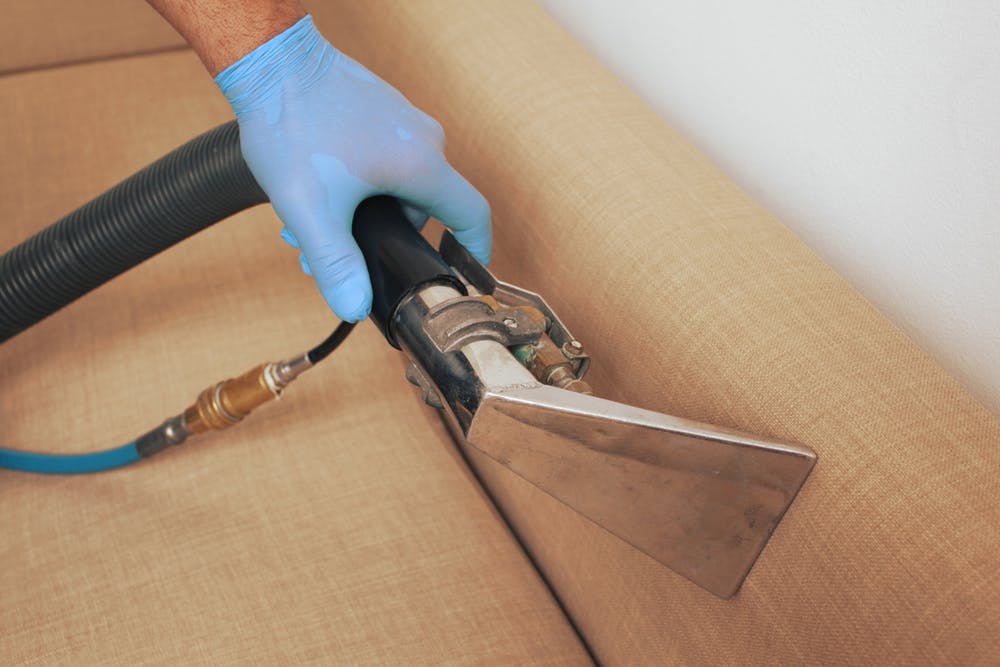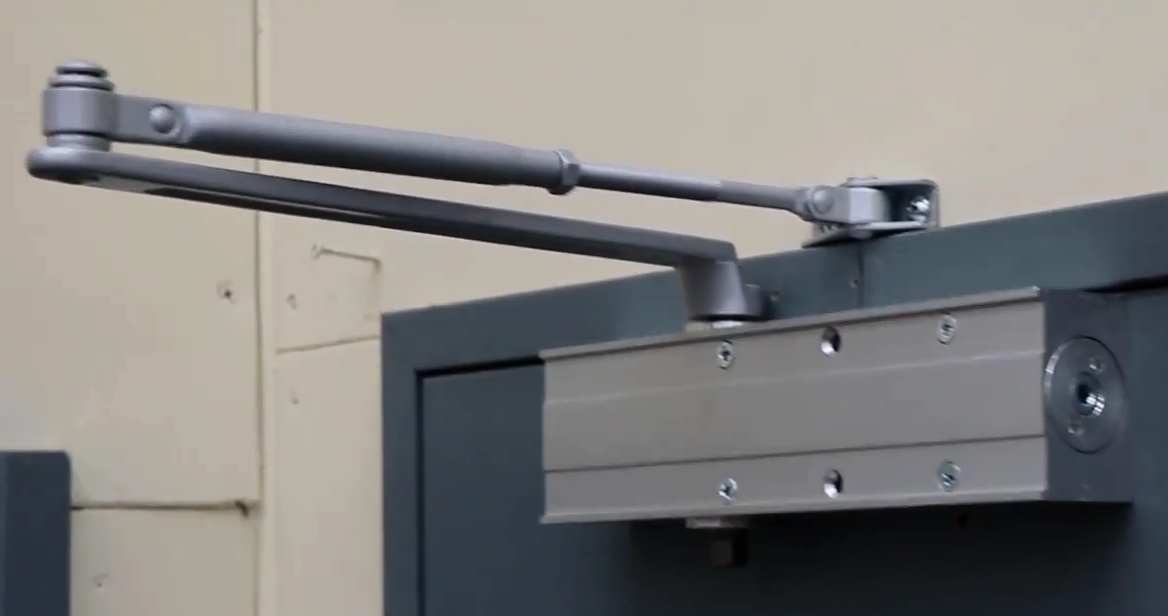Rating of the best manufacturers of fittings for self-supporting insulated wire for 2024

In order to correctly install various electrical elements, durable and strong wires or cables should always be used. As a rule, self-supporting insulated wires are chosen for such needs. The electrical network assembled with their help is quite capable of operating without any complaints for up to 30 years. However, in order to carry out such installation work, you need not only the wire itself, but also special fittings that will hold the cable.
In the environment of power engineering professionals, such fittings were labeled "self-supporting insulated wire fittings". Such special-purpose devices are used for fastening self-supporting wires on supports or facades of buildings, are used for wiring an electrical network, connecting energy consumers, as well as for connecting bare wires of power lines at the point of their connection to a self-supporting insulated wire at the point of transition from an uninsulated surface to an insulated one. According to the maximum load, fittings can be divided into two classes: up to 1 kV and high-voltage samples capable of holding from 6 to 20 kV. Due to the fact that the system for manufacturing and using fasteners for self-supporting insulated wire is practically the same for the whole world, then all world manufacturers adhere to almost the same technologies for their manufacture. Thus, for a clearer understanding of the question of which manufacturer to give preference to, you should familiarize yourself in more detail with the technology of self-supporting insulated wire reinforcement and its areas of application.

The main criteria that the self-supporting insulated wire reinforcement must meet
When choosing special fasteners for the installation of the electrical network, it is necessary to take into account the following important qualities of the samples used:
- Increased strength - fasteners should be made of metal (or other durable materials) that would not be susceptible to destruction due to vibrations and withstand increased loads.
- Corrosion resistance - this is especially true for high-voltage fittings, which must be treated with special compounds that prevent the occurrence of rust.This is done with the aim that such fasteners are most often installed outdoors.
- Resistance to extreme weather conditions - fasteners must easily withstand temperature fluctuations, increase / decrease in humidity, be resistant to the occurrence of an enhanced ultraviolet background. The working standards for self-supporting insulated wire reinforcement are considered to be the limits from -40 to +80 degrees Celsius.
- Ease of installation and operation - modern samples should be easy to install and easy to use, their model range should be wide enough and correspond to various tasks.
As a rule, the manufacturer indicates the most basic technical characteristics of fasteners in the accompanying documents.
Materials for the manufacture of fasteners for self-supporting insulated wire
Usually, any manufacturer (both domestic and foreign) tries to use high-quality materials in its production, because the technical serviceability of the entire electrical network in which they will be used depends on this. Typically, these materials are:
- Resistant polymer;
- Stainless steel;
- Aluminum alloys.
In addition, for linear fittings, which are used for fastening to poles and supports, a special conclusion is additionally issued from the energy testing laboratory. In the conclusion, it is confirmed that, for example, fasteners or a bandage fully meet the criteria for reliability, durability and mechanical strength.
The main existing varieties of SIP-reinforcement
These primarily include:
- Anchor bracket - it carries out fastening of anchor (anchor) clamps on the main line of self-supporting insulated wire. As a rule, it is made of aluminum alloys, which are slightly susceptible to rust and calmly survive low ambient temperatures. In the process of fixing them, a stainless steel bandage is used.
- Branch clamp - it is necessary to create a stable contact, which is provided by contact plates located in the structure and made of tinned copper. Contact can be made even for wires with small cross-sections. This type of fittings is suitable for connecting the cores of cables with a cross section of 6-150 mm2, in highways with conductors, the cross section of which is 1.5-6 mm2 (standard street lighting), as well as when conducting an electrical network to a private house.
- Anchor clamp - this device can be used to fasten the self-supporting insulated wire on branch inputs up to 1 kV. Inside the body of this fastener, special wedges made of thermoplastic are installed, due to which a reliable connection is created with the wire cores without damaging its insulation. These fasteners are made from weather-resistant polymers. Also, this type of clamps uses a special hinge made of steel according to the "hot-dip galvanized" principle.
- Intermediate clamp - this type of reinforcement is used for the self-supporting SIP-4 system, which has two or four cores connected to the corner / intermediate supports. The body of such a device is usually made resistant to increased exposure to sunlight.
- Standard hook - this fastener is used for hanging trunk lines. It is made of steel (galvanized) and is attached to the post / support by means of a couple of steel straps. With its help, you can fix wires to reinforced concrete, metal and wooden poles, as well as fix fasteners on structures or buildings.

It is worth remembering that only the elements that are used in almost all sets of reinforcement for self-supporting insulated wire are indicated above. In turn, depending on the tasks to be performed, the kit may include: various keys, winches, tie straps, connecting sleeves, surge arresters, etc. You need to know that, as such, there is no universal set of fittings for self-supporting insulated wire ...
How to select / install certain types of clamps
Professionals advise:
- Anchor clamps, which are used for trunk cables, in addition to protection against rust, SHOULD be able to withstand a breaking load in the range from 1500 to 2200 kg.
- Branch clamps must be equipped with a shear head made of aluminum, resistant to rust. This head will allow the clamp to be installed without the use of special keys. This design will greatly save time when it is necessary to transfer the subscriber branch to the backbone and back. Otherwise, a special wrench will be required for bolt tightening.
- Branch cable transformation. Sometimes it is possible to use piercing clamps - this operation may be necessary when it is not required to replace the self-supporting insulated wire itself in the electrical network, but it is only necessary to cut the main wire and use the clamp to bring the connection to the subscriber's one. These clamps are made in a rubberized case and are fixed with an ordinary clamping bolt clamp.
- Most clamps allow multiple cable connections. When using moisture-resistant samples, for example, there is no need for additional insulation of the conductors, in addition, the reliability of the electrical contact on the cable itself increases. Sealed clamps can generally be installed without relieving stress, however, to control the situation, it is better to use a special clamp with a monitoring adapter.
It is important to remember that self-supporting insulated wire fittings are not separate clamps, anchors, or other devices - they are a whole set of tools, the correct selection of which guarantees long-term and reliable operation of the electrical network, as well as safe repair work. Currently, there are several standards for fittings for self-supporting insulated wires: from ordinary "SIP" to the advanced "SIP-4".
Scope of application of fittings for self-supporting insulated wires
If in the old days the laying of a self-supporting wire could be carried out without the appropriate fittings, then in the modern world without it it will be impossible to perform a whole front of certain work, for example:
- Connect the cable to the transformer;
- Protect the power grid from possible overloads;
- Create various branches (from production to subscriber);
- Bring the newly created electric highway to the consumer with a guarantee of its reliable fastening.
Among other things, the use of self-supporting insulated wire fittings ensures a high level of safety and allows maintaining a high resource of the electric line on an ongoing basis.
Rating of the best manufacturers of fittings for self-supporting insulated wire for 2024
Domestic manufacturers
The analysis of the market in this segment shows that the Russian manufacturer is extremely poorly represented there. This is due to the long stagnation in this area, which occurred in the 90s and 2000s. Only now, domestic enterprises are trying to establish production of their own products that can compete with Western brands. However, great success in this field will have to wait for a long time.
2nd place: JSC "Irkutskkabel"
Despite its considerable age, the company is a completely newcomer to the market for the sale of fittings for self-supporting insulated wire. Recently, its production has been focused exclusively on the production of cable products, so the manufacture of fittings is, as it were, a side production sector.

- Relative cheapness;
- Compliance of manufactured types of fittings with GOST standards;
- Constantly expanding list of products.
- Little experience in the market;
- Low product quality;
- Limited current range;
- Focus on large customers (the product is practically not available at retail).
1st place: JSC "MZVA" (Moscow plant of high-voltage fittings)
Truly the best Russian manufacturer in this sector. Despite the fact that it has been manufacturing SIP fittings for more than 50 years, it has only entered the level of competition with global brands in the last 8 years.The plant has huge production facilities located in the Nizhny Novgorod region, which allows it to manufacture the entire range of products in accordance with SIP-2, SIP-3, SIP-4 standards. He is the owner of more than 20 patents (namely patents, that is, officially recognized own developments).

- Constantly expanding product catalog;
- Application of unparalleled technologies in valves (special alloy in branch clamps);
- It is planned to launch a new line for the production of linear fittings for self-supporting insulated wire in 2021;
- The products are fully adapted to Russian weather conditions.
- In terms of assortment and variability of goods, it is inferior to global brands.
Foreign manufacturers
The leading role in the world market in this segment is occupied by French companies. Their products for SIP began to be supplied at the very beginning of the Soviet state. Significant experience in this production plays a special role, therefore their products are in demand all over the world.
3rd place: Finnish company "Ensto"
The company is focused on the production of valves that can operate reliably in the cold sea climate. In Russia, its products are licensed according to the SIP, SIP-2 and SIP-4 standards. He does not consider it necessary to use metal in his products, preferring ultra-strong polymers. On the one hand, this leads to a cheaper price, and on the other hand, it reduces wear resistance. The company is the main supplier of SIP-fittings in Poland, Germany, Sweden. In the Russian Federation, she prefers to work only in the regions of the European North, for which its products are more adapted.

- A renowned brand specializing in equipment for cold sea climates;
- Wide range of products;
- Most clamps have pyramidal teeth for a secure hold on icy surfaces.
- Limited scope (areas with low temperature conditions).
2nd place: French company "Niled"
One of the oldest companies for the production of fasteners for self-supporting insulated wire, which has a representative office on Russian soil since 1932 (now the representative office is called LLC "NILED-TD"). Produces fittings for SIP-1, SIP-2, SIP-4. It should be noted that only assembly is carried out in the Russian Federation - original spare parts come from France. Especially for the Russian market, the company unified its products, adjusting the requirements for their production to GOST. Most of the models of the model range are equipped with special devices that facilitate the assembly / disassembly of reinforcement (for example, anchor clamps are equipped exclusively with aluminum shear heads, bolt fasteners (for special keys) are completely excluded).

- Due to the presence of a Russian representative office, great attention is paid to the technical support of products;
- Technologies have been developed for the use of self-supporting insulated wire fittings in the harsh weather conditions of Russia (up to -30 degrees Celsius);
- It is an official supplier to more than 40 Russian power systems.
- Quite high prices.
1st place: French company "Simel"
Another partner since the formation of the Soviet Union, currently under the control of the American "Tyco Electronics", in connection with which it was forced to reduce its presence in the Russian market. The manufactured fittings for self-supporting insulated wire must be supplied with a heat-shrinkable external element, but this applies only to the standards for self-supporting insulated wire-2 In clamps he prefers to use both ultra-strong polymers and metal structures, which allows him to significantly expand the range. At one time, the company decided to produce shear heads for clamps also from thermoplastic, and not from aluminum, which slightly reduced the interest of the domestic consumer in its product.

- The company has extensive experience in the market;
- The assortment is wide enough;
- The use of a variety of materials.
- It does not have its own representative office in the Russian Federation, which increases the price of fittings.
Instead of an epilogue
Competent connection of the electrical line to a specific object requires some knowledge of electrical engineering. In addition, it is also necessary to understand the instrumentation of self-supporting insulated wire reinforcement, which will be used for these works. Any mistake made in this process can result not only in interruptions in the supply of electricity, but also cause damage to life and health of people (for example, during repair work). Thus, it is better to select self-supporting insulated wire fittings in conjunction with a knowledgeable specialist who will guide the potential buyer regarding the price and the set installation / repair task. It is preferable to make a purchase through online stores from well-known and well-established Western brands in the Russian Federation. However, if the task is to significantly save financial resources, then the products of JSC "MZVA" will come in handy.
It is worth recalling that work with the use of self-supporting insulated wire reinforcement must be carried out according to the "Rules for the operation of electrical installations", and the person conducting them must have a special permit in the field of energy security. Otherwise, you can "run into" a rather big fine from the regulatory authorities - from the State Fire Inspection to Energonadzor.
new entries
Categories
Useful
Popular articles
-

Top rating of the best and inexpensive scooters up to 50 cubic meters in 2024
Views: 97661 -

Rating of the best materials for noise insulation for an apartment in 2024
Views: 95022 -

Rating of cheap analogues of expensive drugs for flu and colds for 2024
Views: 91751 -

The best men's running shoes in 2024
Views: 87681 -

Top ranking of the best smartwatches 2024 - price-quality
Views: 85091 -

Best Complex Vitamins in 2024
Views: 84801 -

The best dye for gray hair - 2024 top ranking
Views: 82406 -

Rating of the best wood paints for interior use in 2024
Views: 77202 -

Ranking of the best action cameras from China in 2024
Views: 75269 -

Rating of the best spinning reels in 2024
Views: 74827 -

The most effective calcium supplements for adults and children in 2024
Views: 72463 -

Top rating of the best means for male potency in 2024 with a description
Views: 68296









